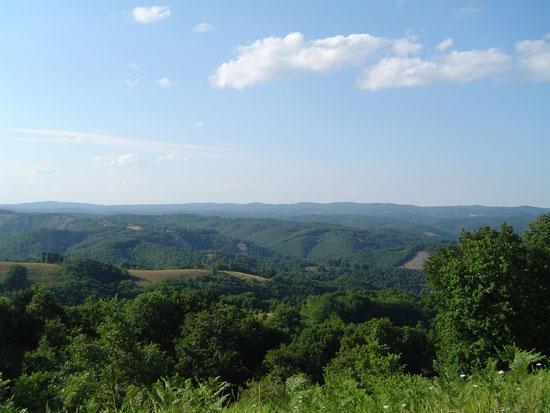Protected Areas
Natural Park "Strandja" - the largest protected area in the Republic of Bulgaria (1161 sq km - 1% of the area of the country). Covers the Bulgarian part of Strandja Mountain Sashtinska, to the south is bordered by Turkey to the east by the Black Sea. The proximity of the park area to the continent of Asia and basins of the Black, Marmara and Mediterranean identities defined in terms of the exceptional biodiversity of Europe as well as in cultural and historical terms.
It was created as a National Park on January 24, 1995 on the initiative of a group of Bulgarian environmentalists and foresters (pursuant to Article 17 and Article 22 of the Law on Nature Protection (CPA) Order № RD-30/24.01.1995g. Of Minister of Environment (State br.15/1995g.) - Annex 5.1. goal is to preserve the benefit of society unique nature of Strandja related traditions and livelihoods and ensure sustainable socio-economic development of the region. then, protection of territory is realized by a fragmented network of reserves, protected areas and natural attractions of the respective regimes in them.
With the entry into force of the Law on Protected Areas (SG 133 from 1998), the park is categorized as "natural" - one of six categories of protected areas that are managed to protect biodiversity, development of scientific, educational and recreational activities, tourism and sustainable use of renewable natural resources while preserving traditional forms of livelihood.
To better protect the natural resources in the park are 5 separate nature reserves, 19 protected areas and 8 landmarks.
Within CORINE - Biotopes region of Strandja is defined as a priority in the environmental network in the country and one of the most important conservation areas in Bulgaria. At the national level park is a protected area with the highest species diversity in all biological groups.
Meeting in the Swiss city of Lucerne in 1992, the environment ministers of Europe announced Strandja one out of five (the only Bulgarian) priority conservation areas in Central and Eastern Europe.
Sole representative of the deciduous forests of the temperate climate with lavroviden undergrowth, the park has a European importance regarding the richness of vascular plants, breeding birds and a variety of reptiles and global importance for mammals, invertebrates and forest tertiary vegetation.
Today, throughout the Natural Park "Strandja" was included in the international ecological network Natura 2000.
The particular location of the park on the foot of Europe and Asia makes it unique in terms of the exceptional biodiversity of Europe as well as in cultural and historical terms. Strandja specific ethno-cultural area with preserved the unique country traditions and customs, local customs and speech. The wealth of monuments from all historical periods adds flair to the area.
The specific location of the park on the border between Bulgaria and Turkey placed within the focus of regional policy for cross-border cooperation and create opportunities to develop partnerships as sustainable development and nature conservation.
Symbol of the park Strandja periwinkle.
|
 |

